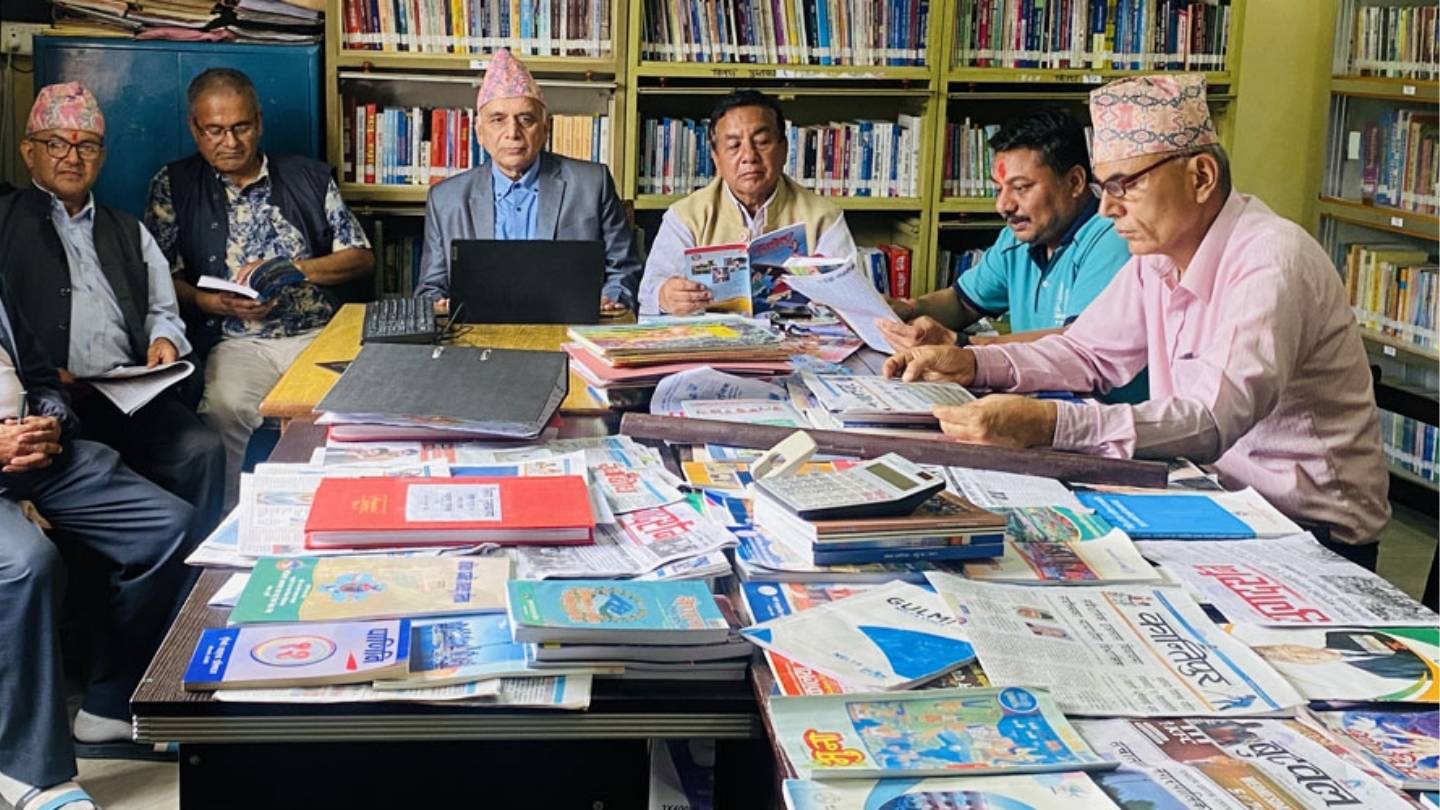
Kiran Library Gulmi: 57 Years of Literary and Cultural Contribution
Kiran Library was established on Kartik 20, 2025 B.S. (1968 A.D.) in Tamghas, Gulmi, at a time when there were no bookshops in the area.
Its main purpose was to promote a reading culture and spread education within the community.
Despite limited resources, the library became a cornerstone for literacy and intellectual development in the district.
Historical Background
The library has a history of nearly 57 years and is considered an integral part of Gulmi’s identity. Initially, it was operated from a cowshed room provided by Pandit Devidatta Panthi in the then Laxmipur Village Panchayat–1. The founding members collected coins from friends and gathered 130 books to officially start the library.
Purpose and Vision
At its inception, the library aimed to encourage reading habits among locals and enlighten society through education. Membership was available for one mohar, allowing individuals to read for a full year. This initiative was crucial in a time when books were scarce.
Early Challenges and Efforts
In the beginning, there was a significant shortage of books. To address this, members would travel to Palpa, Butwal, Kathmandu, Banaras, and Gorakhpur to purchase books.
The library was managed systematically by forming a membership system and collecting a nominal fee to ensure borrowing and returning books in an organized way.
Growth and Reader Engagement
According to Chairman Shashi Panthi, the attraction toward the library grew as new books were added. The library organized discussion sessions to help readers reflect on what they had read. From 2030 B.S., it began publishing the literary magazine “Hamro Purushartha,” providing readers a platform to express their creativity.
Publication Work
“Hamro Purushartha” has been published annually since 2030 B.S., semi-annually from 2036 B.S., and quarterly since Kartik 2070 B.S. So far, 106 issues have been published, and the 107th issue is in preparation. The library has also published 21 special issues.
Infrastructure and Collection
The library now has its own modern, well-equipped building constructed with an investment exceeding NPR 40 million. According to its records, there are currently 12,458 books available, and about 25–30 readers visit daily. Membership can be obtained for NPR 1,000 per year, making reading more accessible.
Library Resources
The collection includes books in Nepali, English, and Hindi on culture, literature, science, history, political science, religion, and philosophy. Researcher Ganesh Shripali has praised the library for playing a vital role in knowledge dissemination and inspiring creative thinking among readers.
Role in Promoting Reading Culture
Senator Padam Prasad Pandey of Lumbini Buddhist University highlighted that Kiran Library has inspired young people to develop reading habits, which are declining in the age of technology and social media. He emphasized that community libraries like this one can significantly strengthen reading culture if established in every local level.
Literary and Cultural Activities
The library regularly celebrates the birthdays of various poets, publishes books, and organizes literary meetings, conferences, and discussions. It has also published works related to history, culture, religion, philosophy, and literature and has been regularly awarding the “Janaki Sahitya Puraskar.”
Modernization and E-Library Initiative
To adapt to changing times, the library is preparing e-library infrastructure and has arranged computer training facilities. Currently, it has 10 computers for public use.
Membership and Management
The library has 18 patron members, 17 distinguished members, and 145 life members. It operates with funds from membership fees, endowments, awards, and house rent. Three staff members work as volunteers to run the daily operations.
Community Impact
The Kiran Library has significantly contributed to developing a reading culture and fostering intellectual growth in Gulmi. Its efforts to inspire readers and promote education remain a model for other communities across Nepal.
Published on: 2025-09-21
Gulmi


